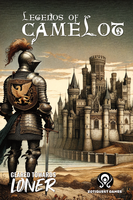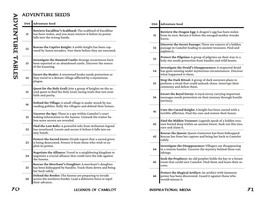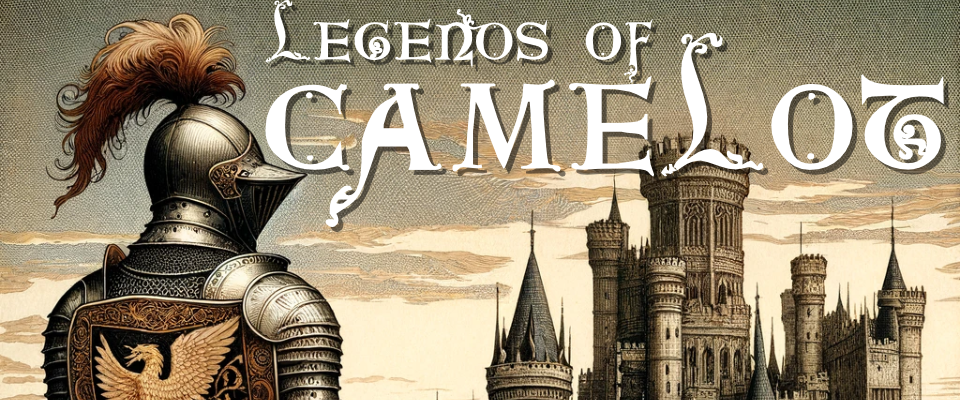Welcome to Camelot!



I have a lot of “useless” (as my wife says) passions, but one of them is a strong and never dormant one for the Matter of Britain.
After all, who hasn’t dreamed of finding themselves in the court of Camelot, surrounded by shining armor, beautiful ladies, and powerful wizards?
My love for all things Britain was ignited by two incredible experiences from my childhood: the animated series of Prince Valiant and the legendary film Excalibur by John Boorman. A pretty hardcore approach for a 7/8-year-old! But as with other things (such as 80s science fiction or Indiana Jones that marked my taste), this imprinting became essential, a part of me—and a part of me that I’m really proud of!
In designing a game like Legends of Camelot, I faced a dilemma: how to deal with consistency with the source material? Should I use a more “historical” approach in the vein of Jack Whyte and other recent storytellers who have rewritten the legend? Or should I take a looser approach and bring together disparate inspirations such as the Romance poems, Le Morte d’Arthur, combining the historical elements? As you may have guessed, I opted for the latter, and I’m thrilled to say that it was the right choice!
The design behind Legends of Camelot focuses on three key principles:
-
Portability – All you need to dive into this world are a few six-sided dice, a pencil, and some paper. No extensive rulebooks or endless equipment lists, just the essentials to start your journey.
-
Rules-Light – The game uses a simple, intuitive system, centered on thematic tags and a straightforward mechanic to resolve actions. The emphasis is on storytelling, not complex rule juggling.
-
Tag-Based Gameplay – Characters are defined by descriptive tags like “Brave Knight” or “Cunning Thief,” capturing their essence without bogging down in numbers. The same goes for the world around you. Whether you’re facing a fierce dragon or exploring the enchanted forests of Avalon, everything in the game is brought to life through evocative descriptors.
In a way, Legends of Camelot gives you the flexibility to shape your own version of Arthur’s court. The game’s minimalist approach lets you focus on the drama, the romance, and the quests that define the legends we all know and love.
A Solo RPG Experience
Unlike traditional RPGs, Legends of Camelot is a solo adventure. This means you take on the roles of both the characters and the game world itself. Using the Oracle mechanic, you can easily resolve the outcomes of your choices and keep the story moving. You’re not limited by someone else’s narrative—here, the story emerges as you play.
Don’t worry though, this isn’t some pre-scripted gamebook! There are no predetermined outcomes, only the endless possibilities your imagination can explore. Want to save a village from marauding Saxons? Or perhaps you’re on the hunt for the Holy Grail? The narrative is completely in your hands, and anything is possible.
Arthurian Setting: A World of Magic and Chivalry
The setting of Legends of Camelot brings together the best of Arthurian legend: shining knights, scheming villains, mysterious wizards, and powerful relics. You’ll traverse rugged medieval landscapes, encounter mystical creatures like dragons and fairies, and tackle quests filled with danger and glory.
The game is rooted in the familiar lore of Camelot, but with the added flair of fantasy elements that make every adventure magical. From the ancient druidic rituals that shape the land to the courtly intrigues that simmer beneath the surface, the world of Legends of Camelot is one where your decisions truly matter. You’ll feel the weight of your honor, the pull of magic, and the thrill of questing for legendary artifacts like Excalibur or the Holy Grail.
Files
Get Legends of Camelot
Legends of Camelot
A Geared Towards Loner Game of Arthurian Adventures
| Status | Released |
| Category | Physical game |
| Author | Zotiquest Games |
More posts
- Available on AmazonSep 17, 2024

Leave a comment
Log in with itch.io to leave a comment.